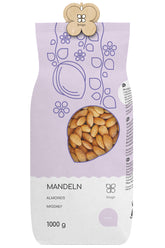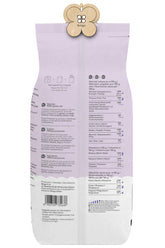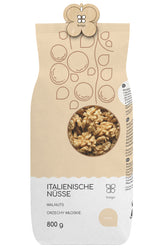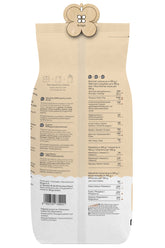What affects the absorption of magnesium?
CONTENTS
- How is magnesium absorbed?
- Mineral ingredients
- Proteins
- Phytinins
- lactose
- Sugar alcohols
- Fats
- Oxalic acid, oxalates
- Polyphenols
- Oligosaccharides
- Hemicelluloses, pectins, soluble fiber
- Summary
Magnesium deficiencies, like calcium deficiencies, are very common, so it's worth making sure that the magnesium you take or supplement with is absorbed as well as possible. How do I maintain it? Which ingredients influence magnesium absorption?
How is magnesium absorbed?
Magnesium is an element that influences many bodily functions. These include the activation of over 300 bodily enzymes, participation in DNA, RNA, and protein biosynthesis, influencing neuromuscular transmission, muscle contractility, and the regulation of bone mineralization. It is estimated that 10% of the Polish population is magnesium deficient. It is absorbed primarily in the jejunum and ileum, where an acidic environment prevails (see the table below for the exact distribution).
Magnesium is absorbed in two ways:
- by passive transport associated with the electrochemical gradient;
- - Carrier protein (transient receptor potential melastatin), which is located in the apical part of the epithelial cell
Mineral ingredients
Studies conducted in rats show that high intakes of calcium (over 2000 mg/day) and phosphorus can reduce magnesium uptake (absorption). This is likely due to the formation of an insoluble complex. Furthermore, high levels of calcium reduce plasma parathyroid hormone concentrations, which impairs magnesium absorption. At the same time, it should be noted that calcium competes with magnesium for absorption sites and can impair the permeability of cell membranes to magnesium.
High doses of sodium, potassium, zinc and iron can also reduce magnesium absorption.
Proteins
Unlike minerals, proteins have a positive effect on magnesium absorption. However, the protein source is important. Phytates, such as those found in soy, reduce magnesium absorption. Therefore, soy protein concentrates should not necessarily be combined with magnesium supplements.
Phytinins
Phytates are salts of phytic acid; they are a reserve form of minerals and phosphates found in cereals, legumes, vegetables, fruits, and nuts. In combination with magnesium, phytic acid forms an insoluble compound. The properties of phytates can be neutralized by the breakdown of phytic acid.
You can do this by:
- Boiling - reduction of concentration by about 20%;
- Acidification and fermentation - you can use yeast, malt, sourdough, vinegar, tomato paste - Fitz enzyme contained in the product breaks down phytic acid and is active in an acidic environment;
- Germination - during germination, seeds use phytates, which reduces their concentration (in soybeans, germination can reduce the amount of phytates by 37%);
- mechanical treatments - removing the outer layer of the grain and milling, e.g. in flour production, reduces the amount of phytates.
lactose
Although there are currently few human studies confirming the stimulating effect of lactose on magnesium absorption, studies conducted on rats are extremely promising.
Sugar alcohols
It turns out that sugar alcohols such as xylitol and sorbitol, which are a nutrient for gut bacteria, can increase magnesium absorption by 9%. This actually translates to about 51% absorption.
Fats
Research on the effect of fat on magnesium absorption is currently unclear. There is no single position that confirms or denies the beneficial effect of fat. Some studies on this topic suggest a beneficial, albeit small, effect of fat on magnesium absorption, while others deny this. Further research is needed in this area.
Oxalic acid, oxalates
It occurs in the form of sodium, potassium, or calcium salts in plants such as sorrel, rhubarb, spinach, cocoa, tea, nuts, and coffee. It is collected in petioles and lower leaves. It is consumed daily in approximately 100–150 mg in a Western diet and approximately 191 mg in a vegan diet. In the intestines, oxalic acid forms complexes with metal ions, including magnesium, which prevent its absorption into body tissues.
Polyphenols
Polyphenols are organic chemical compounds containing a group of phenols (aromatic rings) linked by two hydroxyl groups (-OH). They are abundant in plants and have potent antioxidant properties. While there is no definitive confirmation yet, there is evidence that polyphenols may negatively affect magnesium absorption.
Oligosaccharides
Oligosaccharides are molecules formed by linking several sugars together via an O-glycosidic bond. They are resistant to the action of digestive enzymes but are fermented with the help of intestinal bacteria. As a result of this process, short-chain fatty acids and lactic acid are formed. The former have a positive effect on magnesium absorption. The beneficial effects of oligosaccharides, including inulin, have been demonstrated, for example, in postmenopausal women (administered short-chain oligosaccharides) and infants (administered inulin).
Hemicelluloses, pectins, soluble fiber
Hemicelluloses are a fraction of dietary fiber found in the cell walls of plants, particularly cereals. They have a low molecular weight and form branched structures, which distinguishes them from cellulose. Large amounts of these substances increase the excretion of magnesium in the stool, meaning they decrease its concentration in the body. A similar relationship has not been observed in the case of pectin, a polysaccharide found in the cell walls and intercellular spaces of plants and is a mixture of sugars. However, reports on the effect of soluble dietary fiber on magnesium absorption and concentration are unclear, and further research is needed.
Summary
Positively on absorption Magnesium influences calcium and phosphorus, but only in the right concentration; protein, lactose, sugar alcohols (e.g. xylitol, sorbitol); oligosaccharides, especially short-chain ones, and possibly also fats. Magnesium absorption is negatively influenced by large amounts of calcium, phosphorus, zinc, iron, potassium and sodium; phytates (phytic acid), oxalates (oxalic acid); hemicelluloses and probably also polyphenols. Further research is needed to clarify the effects of fat, polyphenols and soluble fiber on magnesium absorption.
THE PUBLISHER'S CHOICE
Almonds 1 kg BIOGO
- £11.00
£13.00- £11.00
- Unit price
- / per
Walnuts 800 g BIOGO
- £8.00
£10.00- £8.00
- Unit price
- / per
Dried organic mango 400 g BIOGO
- £10.00
- £10.00
- Unit price
- / per
Dried White Mulberries 500 g ORGANIC
- £6.00
£7.00- £6.00
- Unit price
- / per
Dried organic figs 800 g BIOGO
- £27.00
- £27.00
- Unit price
- / per
Unpeeled buckwheat groats 1 kg BIOGO
- £3.00
£3.00- £3.00
- Unit price
- / per
Organic coconut flakes 500 g BIOGO
- £9.00
- £9.00
- Unit price
- / per
Organic oat flakes 600 g BIOGO
- £4.00
- £4.00
- Unit price
- / per
Organic cashew nuts 1 kg BIOGO
- £18.00
- £18.00
- Unit price
- / per
Milk thistle seeds 1 kg BIOGO
- £4.00
- £4.00
- Unit price
- / per









































































































































